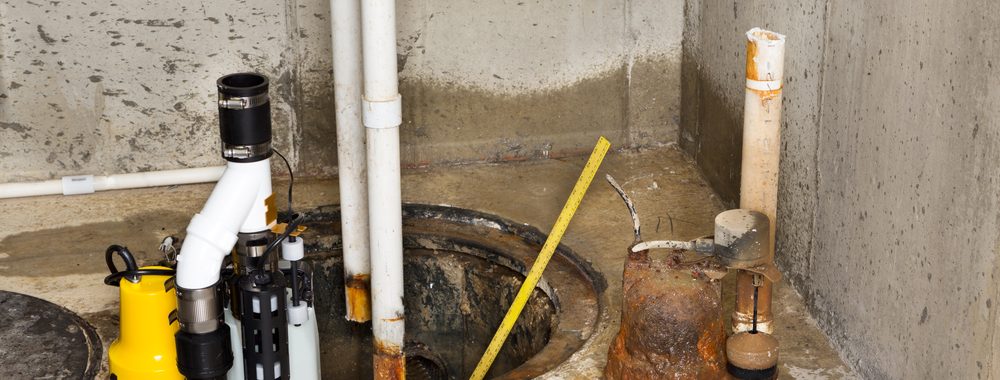An Definitive Guide to Caring for a Sump Pump
An Definitive Guide to Caring for a Sump Pump
Blog Article
Every person seems to have his or her own opinion with regards to Steps to Cleaning Your Sump Pump Properly.

Sump pumps are critical elements in numerous homes, specifically in locations susceptible to flooding or excessive wetness. They aid prevent water damage by successfully removing excess water from cellars or crawl spaces. Nonetheless, like any other home appliance, sump pumps need routine maintenance to ensure they function effectively when required the most. Cleansing your sump pump is an important part of its upkeep, and understanding just how to do it appropriately can save you from costly repair work and prospective disasters.
Intro
Preserving a clean sump pump is essential for its correct functioning and long life. Ignoring this vital job can bring about blockages, malfunctions, and inevitably, water damages to your building. Therefore, discovering exactly how to clean up a sump pump is essential for property owners that count on these tools to maintain their cellars completely dry and safeguarded.
Comprehending the Sump Pump
Before diving into the cleaning process, it's vital to have a basic understanding of just how a sump pump functions. Normally installed in a pit or basin listed below the cellar floor, a sump pump includes a number of essential components, including a pump, a float switch, and a discharge pipeline. When water builds up in the pit, the float button triggers the pump, which after that pumps the water out with the discharge pipeline, away from the building's foundation.
Indications of a Dirty Sump Pump
Knowing when your sump pump needs cleaning is critical for protecting against potential breakdowns. Some usual indicators that suggest an unclean sump pump include odd noises during procedure, lowered water flow, and noticeable debris in the pit. If you observe any one of these symptoms, it's important to cleanse your sump pump promptly to prevent any type of additional concerns.
Getting ready for Cleaning
Prior to you start cleansing your sump pump, it's essential to take some safety and security precautions. Begin by shutting down the power to the pump to prevent any kind of electrical crashes. Furthermore, use ideal protective equipment, such as handwear covers and goggles, to secure on your own from dirt, debris, and prospective virus.
Detailed Guide to Cleaning a Sump Pump
Turning off the Power
Begin by detaching the power supply to the sump pump to avoid any kind of crashes while cleansing.
Eliminating Particles and Dirt
Use a pail or an inside story to get rid of any noticeable particles, dust, or debris from the sump pit. Dispose of the particles properly to avoid it from blocking the pump or the discharge pipe.
Cleaning up the Pump and Drift Change
As soon as the pit is clear of debris, very carefully eliminate the pump from the pit. Inspect the pump and the float button for any signs of damages or wear. Use a soft brush or towel to cleanse the surfaces and get rid of any type of gathered grime.
Flushing the System
After cleaning the pump and float button, flush the sump pit with tidy water to get rid of any remaining dust or debris. This will certainly aid make sure that the pump operates efficiently and effectively.
Checking for Correct Functioning
Prior to reinstalling the pump, execute a quick examination to ensure that the float button triggers the pump correctly. Put some water into the sump pit and observe the pump's operation. If every little thing is operating appropriately, you can reassemble the pump and reconnect the power supply.
Upkeep Tips to Maintain Your Sump Pump Clean
In addition to regular cleansing, there are numerous upkeep pointers you can comply with to keep your sump pump in ideal problem:
Final thought
Cleansing your sump pump is an essential element of its maintenance and makes certain that it runs efficiently when you need it one of the most. By complying with the steps described in this guide and including normal upkeep into your regimen, you can expand the life-span of your sump pump and safeguard your home from water damages.
6 STEPS ON HOW TO CLEAN A SUMP PUMP PROPERLY
UNDERSTANDING SUMP PUMPS
Your sump pump plays a crucial role in protecting your home by managing and removing excess water. It primarily functions as a “shield”, guarding your basement against the damaging effects of water accumulation. The pump is housed in a sump pit in the lowest part of your basement, and its job is to pump out any water that collects there.
During heavy rainfalls or when snow melts rapidly, water can infiltrate your basement, posing potential risks like flooding, structural damage, and harmful mold growth. Here, the sump pump springs into action, pumping out the intruding water and directing it away from your home.
SAFETY FIRST
Before cleaning, remember to prioritize safety. Disconnect the sump pump from the power source to prevent any accidental electric shocks. Also, wear sturdy gloves to protect your hands from any sharp or dirty components within the pump.
REMOVE THE SUMP PUMP
After ensuring your safety, the next step is to remove the sump pump from its pit. Doing this might require careful maneuvering as you don’t want to damage any pump components. Once removed, clean the sump pit to remove any accumulated debris or sludge.
INSPECT THE PUMP
Inspect the pump for any visible signs of wear or damage. Check the power cord, float switch, and impeller housing. If any components look worn out or damaged, consider replacing them to ensure optimal performance.
CLEAN THE PUMP
Thoroughly clean the pump with warm, soapy water. Make sure to rid it of any dirt, gravel, or other debris that might impede its performance. You can use a toothbrush to clean the small, hard-to-reach parts of the pump.
REINSTALL THE SUMP PUMP
Reinstall the pump into the sump pit Make sure it’s positioned correctly to remove the water effectively Once it’s back in place, reconnect it to the power source TEST THE PUMP
Finally, pour some water into the pit to ensure the pump works correctly. It should start automatically and begin pumping out the water; if it doesn’t, check the power source and the positioning of the pump.
Remember, while cleaning your sump pump is an essential part of home maintenance, hiring a professional plumber for a thorough inspection and cleaning at least once a year is also important. This will ensure that your pump is in optimal condition, ready to protect your home from potential water damage.
BEST PRACTICES FOR CLEANING SUMP PUMP DISCHARGE PIPES
Regular Inspection: Regularly inspect your discharge pipes, especially during heavy rainfall or snowmelt periods. Look for any signs of blockage or damage. Early detection of problems can prevent serious issues down the line. Periodic Cleaning: Over time, sediment and debris can accumulate in the discharge pipes, impeding the flow of water. Regular cleaning helps keep the pipes clear and functioning efficiently. You can use a high-pressure water jet to effectively clean the pipes. Insulation During Winter: In colder climates, discharge pipes can freeze, blocking the outflow of water. Protect your discharge pipes from freezing temperatures by insulating them with foam pipe insulation. This will ensure the sump pump can continue to discharge water even in freezing conditions. Proper Positioning: The discharge pipe should be positioned to direct water away from your home’s foundation. Improper positioning can lead to water seeping back into the basement. Ensure the pipe is long enough and angled correctly. Installation of a Check Valve: A check valve prevents water from flowing back into your sump pit after the pump has pushed it out. Installing a check valve helps maintain the efficiency of your sump pump and reduces the risk of flooding. Minimize Pipe Turns: Every curve or turn in the discharge pipe can decrease the efficiency of water flow. By minimizing turns and bends in your discharge pipe, you can increase the efficiency of your sump pump. https://www.fullspeedplumbing.com/how-to-clean-a-sump-pump-properly9999/

I hope you liked our section about How To Effectively Clean A Sump Pump. Thanks so much for spending some time to browse our article post. For those who liked our article plz do not forget to share it. I am grateful for your time. Please pay a visit to our site back soon.
Go Deal Now Report this page